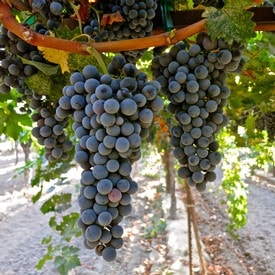A Journey Through Time: The Development of Cabernet Sauvignon Wine Grape
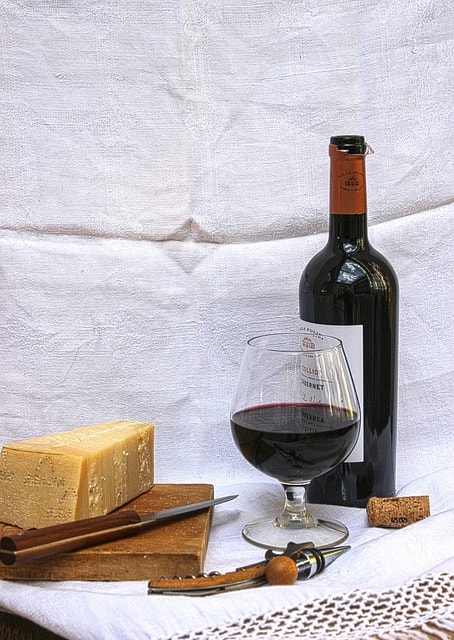
Cabernet Sauvignon, the monarch of red wine grapes, has earned its place as a staple in vineyards across the globe. Its rich history intertwines with the evolution of winemaking itself, spanning centuries of cultivation, refinement, and global migration. From its humble beginnings to its current reign as one of the world's most revered varietals, the story of Cabernet Sauvignon is a testament to human ingenuity and the enduring allure of the red wine grape.
This article is one of several articles that will feature grapes most known for being grown in California, Cabernet sauvignon, Pinot Noir, Chardonnay, and Zinfandel.
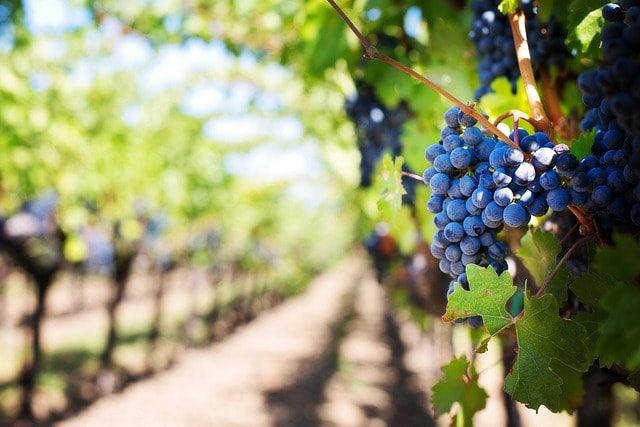
Origins of Cabernet Sauvignon: Bordeaux France
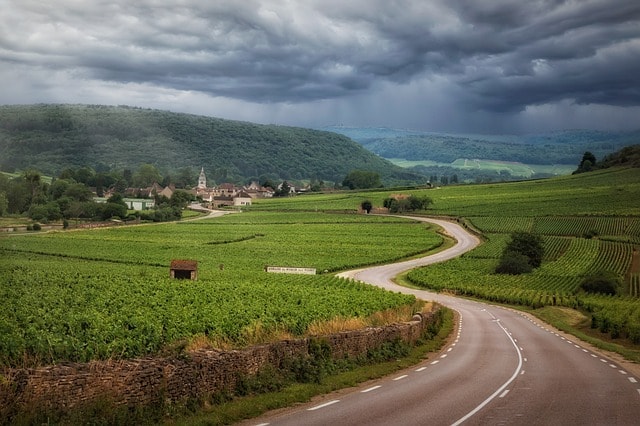
The origins of Cabernet Sauvignon can be traced back to the rugged landscapes of southwestern France, particularly the Bordeaux region. While the exact parentage of this noble grape remains a subject of debate, it is widely believed to be a natural cross between Cabernet Franc and Sauvignon Blanc, hence its name. Historical records suggest that Cabernet Sauvignon emerged sometime in the 17th century, although its precise origins are shrouded in mystery.
Where Did the King of Grapes Come From
Cabernet Sauvignon is one of the world's most renowned and widely cultivated wine grape varieties. Its origin story is a fascinating blend of natural genetic crossing and historical development. Here's a detailed explanation of how Cabernet Sauvignon came to be:
Cabernet Sauvignon is the result of a natural crossing between two other grape varieties: Cabernet Franc and Sauvignon Blanc. This crossing likely occurred in the 17th century in the Bordeaux region of France. The exact circumstances of the crossbreeding are not documented, but it is believed to have happened naturally in vineyards where both parent varieties were cultivated. More about Sauvignon Blanc and the name Cabernet sauvignon Franc in another article and a different time.
DNA Profiling
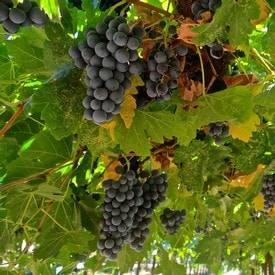
Modern DNA profiling has confirmed the parentage of Cabernet Sauvignon grapes. Researchers used genetic analysis to establish that today Cabernet sauvignon Franc, a red grape, and Sauvignon Blanc, a white grape, are its parents. This breakthrough helped to clarify the lineage and historical development of the grape.
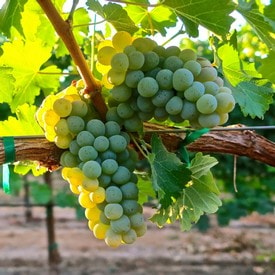
Historical Development

Bordeaux Origins:
The Bordeaux region of France, particularly the Médoc area, is where Cabernet Sauvignon first gained prominence. The grape thrived in Bordeaux's gravelly soils, which provide excellent drainage and ideal growing conditions. Over time, it became a key component of the region's famous red blends.
Spread and Popularity:
Throughout the 18th and 19th centuries, Cabernet Sauvignon's reputation for producing high-quality, age-worthy wines grew. Bordeaux winemakers refined their techniques, and the grape's resilience and adaptability made it a favorite among viticulturists.

Global Expansion:
By the late 19th and early 20th centuries, Cabernet Sauvignon grapes and Cabernet Sauvignon wines had spread beyond France to other wine-producing regions around the world. It found success in places like California's Napa Valley, Chile's Maipo Valley, Australia's Coonawarra region, and Italy's Tuscany. In each of these regions, the grape adapted to local conditions and terroir, developing unique expressions while retaining its core characteristics of Cabernet Sauvignon wines.
Characteristics and Influence
Viticultural Traits:
Cabernet Sauvignon is known for its thick-skinned berries and small grape clusters, which contribute to its deep color and high tannin levels. The grape is relatively hardy and resistant to disease, making it a reliable choice for winemakers.
Flavor Profile:
Wines made from Cabernet Sauvignon typically exhibit flavors of dark fruits like blackcurrant, blackberry, and plum, along with notes of green bell pepper, mint, and cedar. Aging in oak barrels can add layers of complexity, including vanilla, tobacco, and leather.
Blending Partner:
In Bordeaux, Cabernet Sauvignon is often blended with other grape varieties such as Merlot, Cabernet Franc, Petit Verdot, and Malbec all well-known Bordeaux wines. This practice balances the grape's intense tannins and acidity, creating more harmonious and complex wines produced.
Iconic Status:
Cabernet Sauvignon's ability to produce high-quality red wines that age well has cemented its status as one of the world's most important and respected grape varieties. It is a staple in the portfolios of many of the world's top wineries and continues to be a benchmark for red wine quality.
Early Cultivation
In its infancy, Cabernet Sauvignon faced challenges typical of any new grape variety. Its susceptibility to disease and variable yields made it a risky proposition for many winemakers. However, its innate qualities—deep color, robust tannins, and complex flavors—quickly endeared it to vintners willing to invest time and resources in its cultivation.
Bordeaux and Beyond
By the 18th century, Cabernet Sauvignon had firmly established itself as a cornerstone of Bordeaux winemaking. It played a prominent role in the region's renowned blends, adding structure and aging potential to wines already celebrated for their finesse and elegance. As Bordeaux's reputation spread beyond French borders, so too did the fame of Cabernet Sauvignon wines.
The Grape and Its Terroir
Cabernet Sauvignon, originally from the Bordeaux region of France, found a second home in California, where the state's varied climate and soil conditions allow it to express a unique character. The grape's thick skins and high tannins contribute to wines with robust structure and deep color, while the diverse terroir of regions like Napa Valley, Sonoma County, and Paso Robles imparts distinctive qualities to the wine.
Global Spread
The 19th century witnessed the global expansion of Cabernet Sauvignon started to become a widely planted wine grape, thanks in part to European settlers and explorers who carried vine cuttings to far-flung corners of the world. In regions as diverse as California, Australia, and Chile, Cabernet Sauvignon found new homes and adapted to different climates and terroirs with remarkable versatility. Yes, this grape and the bottles of wine have spread to thew world wine regions. Each new environment imparted its own unique nuances to the grape, leading to a fascinating array of expressions that continue to captivate wine enthusiasts today.
Modern Era
In the modern era, Cabernet Sauvignon stands tall as a symbol of prestige and quality. Its prominence in prestigious wine regions like Napa Valley and Tuscany underscores its enduring appeal among both winemakers and consumers. Advances in viticulture and winemaking techniques have further enhanced the grape's potential, allowing for the production of wines that rival the finest Bordeaux blends in complexity and sophistication.
Cabernet Sauvignon
As the king of red wine grapes, the Cabernet Sauvignon grape commands reverence in California's top wine regions, particularly Napa Valley. Here, the grape thrives in the warm, well-drained soils of the valley floor, producing wines of unparalleled depth, complexity, and aging potential. California Cabernet Sauvignon wines are characterized by its rich, ripe black fruit flavors, velvety tannins, and notes of cedar, tobacco, and dark chocolate. Beyond Napa, regions like Paso Robles and Sonoma also excel in crafting exceptional expressions of this noble varietal. You don't have to look too far to discover a good cabernet sauvignon.
California's Cabernet Sauvignon: A Testament to Viticultural Excellence
California's wine industry has long been a beacon of viticultural brilliance, with Cabernet Sauvignon standing as one of its most prestigious varietals. This full-bodied red wine, known for its bold flavors and remarkable aging potential, thrives in California's diverse wine regions, producing world-class wines that compete on the global stage.
Why is Cabernet Sauvignon such a popular California Wine?

Chardonnay may reign supreme in California, but Cabernet Sauvignon isn't far behind, holding its own as the second most planted variety at 22%. In fact, on a global scale, Cabernet Sauvignon stands as the most widely planted wine grape. So, what fuels its popularity, especially in California? One key factor is its resilience. Cabernet Sauvignon grapes are robust, capable of withstanding intense heat and thriving in dry soils that might deter other crops. Their late ripening also means they rarely get scorched, allowing vintners to control their ripeness more effectively.
However, Cabernet Sauvignon’s allure isn't solely due to its hardiness. It's also an expensive grape to cultivate and a costly wine to produce. Yet, its global popularity persists. From budget-friendly bulk wines to premium, high-quality bottles, Cabernet Sauvignon remains a favorite among wine enthusiasts. Its flavors are widely enjoyed, making it a go-to choice for many.
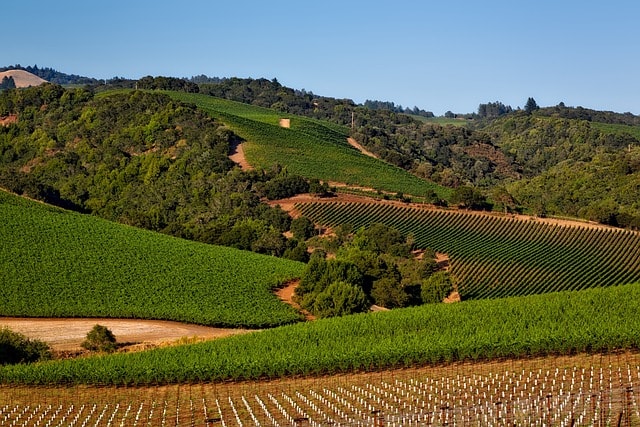
The Napa Valley
Napa Valley, with its Mediterranean climate, is perhaps the most renowned area for California Cabernet Sauvignon. The valley's warm days and cool nights, coupled with well-drained volcanic soils, create an ideal environment for producing wines with rich fruit flavors and balanced acidity. Meanwhile, Sonoma County offers a slightly cooler climate, yielding wines with more pronounced earthy and herbal notes.
Crafting Excellence: The Winemakers
California's winemakers are the artisans behind the state's exceptional Cabernet Sauvignon, blending traditional techniques with innovative practices to push the boundaries of winemaking.

Robert Mondavi
Robert Mondavi is a name synonymous with California and great wine. His pioneering vision in the mid-20th century helped elevate Napa Valley to international acclaim. Mondavi's approach emphasized the importance of terroir, and his legacy continues through the winery's commitment to producing complex, age-worthy Cabernets.
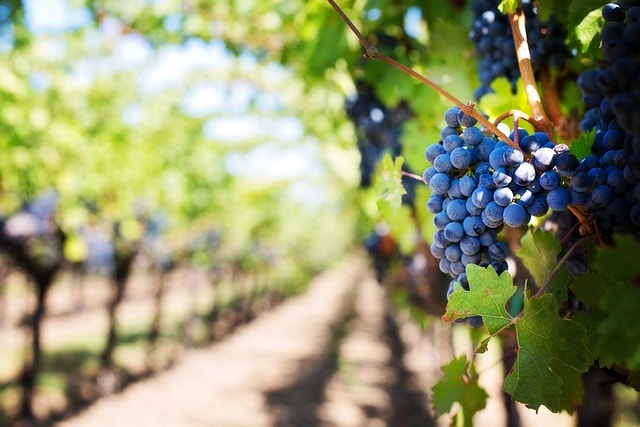
Caymus Vineyards
Caymus Vineyards, led by the Wagner family, is another iconic producer. Their focus on meticulous vineyard management and extended barrel aging results in Cabernets that are renowned for their depth, concentration, and velvety texture. Caymus' Special Selection Cabernet Sauvignon has become a benchmark for quality.
Silver Oak Cellars
Silver Oak Cellars is celebrated for its dedication to producing exclusively Cabernet Sauvignon. Founded by Raymond Duncan and Justin Meyer, Silver Oak emphasizes American oak aging, which imparts unique vanilla and spice notes to their wines. Their commitment to sustainability and quality has earned them a loyal following.
Stag's Leap Wine Cellars
Stag's Leap Wine Cellars gained international fame in 1976 when its 1973 Cabernet Sauvignon won the Judgment of Paris tasting, a pivotal moment that demonstrated California's potential to produce world-class wines. Today, the winery continues to uphold its reputation, crafting elegant and balanced Cabernets that honor the legacy of founder Warren Winiarski.
The Legacy and Future
California's Cabernet Sauvignon is not only a testament to the state's exceptional terroir but also to the vision and dedication of its winemakers. These artisans have mastered the art of harnessing the grape's potential, creating wines that are celebrated for their complexity, structure, and ability to age gracefully.
As sustainable practices and innovative techniques continue to evolve, the future of California Cabernet Sauvignons looks promising. The new generation of winemakers is committed to preserving the integrity of their vineyards while exploring new frontiers in winemaking. This ongoing dedication ensures that California's Cabernet Sauvignon will remain a symbol of excellence in the world of wine for years to come.
LODI
While Lodi might be better known for its outstanding Zinfandels, there are some noteworthy Cabernet Sauvignons are coming from this California Wine Region as well. In fact, the are man different wine grapes to be found in Lodi and cabernet sauvignon planted vines are to be found many wine regions as well. Here are a few suggestions, but feel free to explore.
2016 Peltier Winery & Vineyards, the Cabernet Sauvignon vines of Schatz Farm Family Reserve Cabernet Sauvignon of Clements Hills-Lodi produces a delightful cabernet sauvignon.
Appearance: Rich, medium-intense ruby color.
Aromas: Intense black cherry, blackcurrant, hints of green herbal notes, and toasty/vanillin oak.
Palate: Ripe-toned fruit with generous tannins and young oak. 14.5% alcohol.
Winemaker Comments: Balanced structure with lots of fruit; consumer-friendly despite intense oak.
Lange Twins Family Winery & Vineyards, Thirty-Eight Vineyard Cabernet Sauvignon
Appearance: Rich ruby color with medium-intense pigment.
Aromas: Cherry/black fruit, floral violet notes, green herbiness, and subtle vanillin/toasted oak.
Palate: Medium-full body, fine feel, notable acid balance, and moderate weight. 14.2% alcohol.
Winemaker Comments: Elegant style with dark berry aromas, balanced oak, and velvety tannins.
2016 Rapture (by Michael David Winery), Cabernet Sauvignon, Mokelumne River-Lodi
Appearance: Purplish ruby color.
Aromas: Blackcurrant, red berry, cherry with sweet-toned, harmonious notes.
Palate: Full-bodied, savory, rich, and layered with bright fruit tone.
Winemaker Comments: Juicy with toasty oak, floral notes, balanced acidity, and well-rounded tannins.
Michael David Winery - Earthquake, Cabernet Sauvignon, Lodi
Appearance: Dark, vivid ruby color.
Aromas: Black fruit, black cherry, vanillin/toasty oak.
Palate: Fleshy, full body with velvet texturing and rounded tannin. 15.0% alcohol.
Winemaker Comments: Cassis, plum, blueberry notes, rich palate with nice barrel aging.
2016 Mettler Family Vineyards, Cabernet Sauvignon, Lodi
Appearance: Vivid purplish ruby color.
Aromas: Black cherry, blackcurrant, vanillin/toasty/cedary/pencil-box oak.
Palate: Medium-full body with a ripe fruit, toned fruit, sturdy tannin, and vanillin oak. 14.7% alcohol.
Winemaker Comments: Sweet/smoky/vanilla qualities, plummy fruit, and sharply defined nose.
Anaya Vineyards, Cabernet Sauvignon, Clements Hills-Lodi
Aromas: Dark ruby color with chocolaty/mocha notes and dark berry qualities.
Palate: Ripe, extracted, broad, and full with chunky tannin.
Klinker Brick Winery, Cabernet Sauvignon, Mokelumne River-Lodi
Aromas: Purplish ruby color, red berry perfume, and red licorice.
Palate: Medium-full body with well-delineated cherry/berry qualities, moderate tannin, and balanced oak.
Beyond Napa Valley
Lesser-Known California Wineries Producing Exceptional Cabernet Sauvignon
While Napa Valley and its iconic wineries often steal the spotlight among wine producers, California is home to many lesser-known wineries that produce many such wines as outstanding Cabernet Sauvignon. These hidden gems offer unique and delicious wines that are worth discovering for any wine enthusiast.
Halter Ranch Vineyard
Halter Ranch Vineyard, located in Paso Robles, is a standout. Nestled in the rolling hills of the Central Coast, Halter Ranch benefits from a unique microclimate and limestone-rich soils that enhance the grape’s complexity. Their Cabernet Sauvignon is renowned for its rich, dark fruit flavors and well-balanced tannins, making it a favorite among connoisseurs seeking a blend of tradition and innovation.
Crocker & Starr
Crocker & Starr, situated in the historic St. Helena region of Napa Valley, combines the expertise of winemaker Pam Starr with the legacy of the Crocker Estate, which dates back to the 19th century. Their Cabernet Sauvignon, crafted from organically farmed grapes, is celebrated for its elegance and depth, offering notes of blackberry, cassis, and a hint of cocoa.
Casa Dumetz Wines
Casa Dumetz Wines in Santa Barbara County is another hidden gem. Founded by winemaker Sonja Magdevski, Casa Dumetz focuses on small-lot, handcrafted wines. Their Cabernet Sauvignon, sourced from carefully selected vineyards, exhibits a unique profile with vibrant acidity, red fruit, and spice notes, showcasing the distinct terroir of the region.
Domaine Eden
Domaine Eden, an offshoot of the esteemed Mount Eden Vineyards in the Santa Cruz Mountains, produces exquisite Cabernet Sauvignon with a distinctive character. The high elevation and cool climate contribute to the wine's intense aromatics and refined structure, marked by flavors of black cherry, cedar, and earthy undertones.
Smith-Madrone Winery
Smith-Madrone Winery, perched atop Spring Mountain in Napa Valley, offers a rustic charm and an unwavering commitment to quality. Founded by brothers Stuart and Charles Smith, this boutique winery produces Cabernet Sauvignon with exceptional purity and expression. The wine’s robust tannins and concentrated fruit flavors reflect the rugged terrain and meticulous vineyard practices.
These lesser-known wineries exemplify the diversity and excellence of California's Cabernet Sauvignon. By venturing beyond the familiar names, wine lovers can discover an array of distinctive and delicious Cabernets that highlight the state's rich viticultural landscape.
Conclusion
In summary, Cabernet Sauvignon's journey from a natural crossbreeding event in Bordeaux of Cabernet Franc and Sauvignon Blanc to a global wine icon involves a combination of genetic serendipity, favorable growing conditions, and the efforts of winemakers to harness and refine its potential. Its adaptability and distinctive characteristics have made it a cornerstone of the wine world resulting in the Cabernet Sauvignon wine we enjoy today.
The development of Cabernet Sauvignon is a testament to the enduring relationship between humanity and the vine. From its humble origins in Bordeaux to its global dominance today, this noble grape has traversed continents and centuries, leaving an indelible mark on the world of wine. Whether you are new to this delightful red wine or a long-time white wine grape lover, as you raise your glass to enjoy on your palate the timeless allure of Cabernet Sauvignon. Let us together celebrate not only Cabernet Sauvignon the popular red wine grape name, its storied past, but also the promise of a future filled with discovery and delight.
Special thanks to photographer Randy Caparoso, other images courtesy Pixabay

